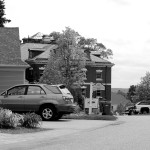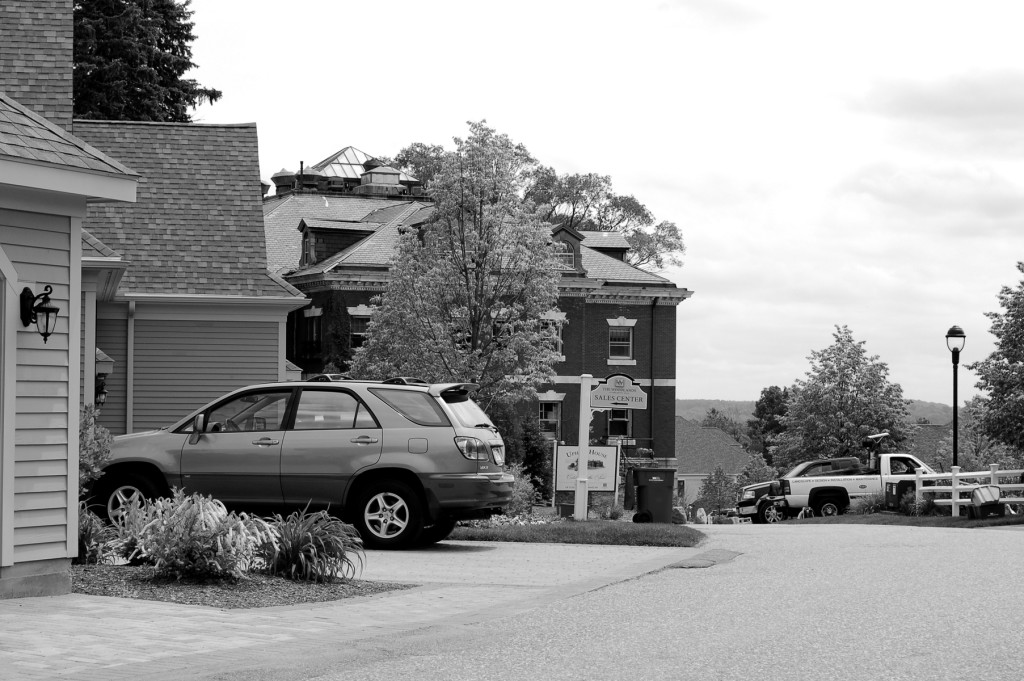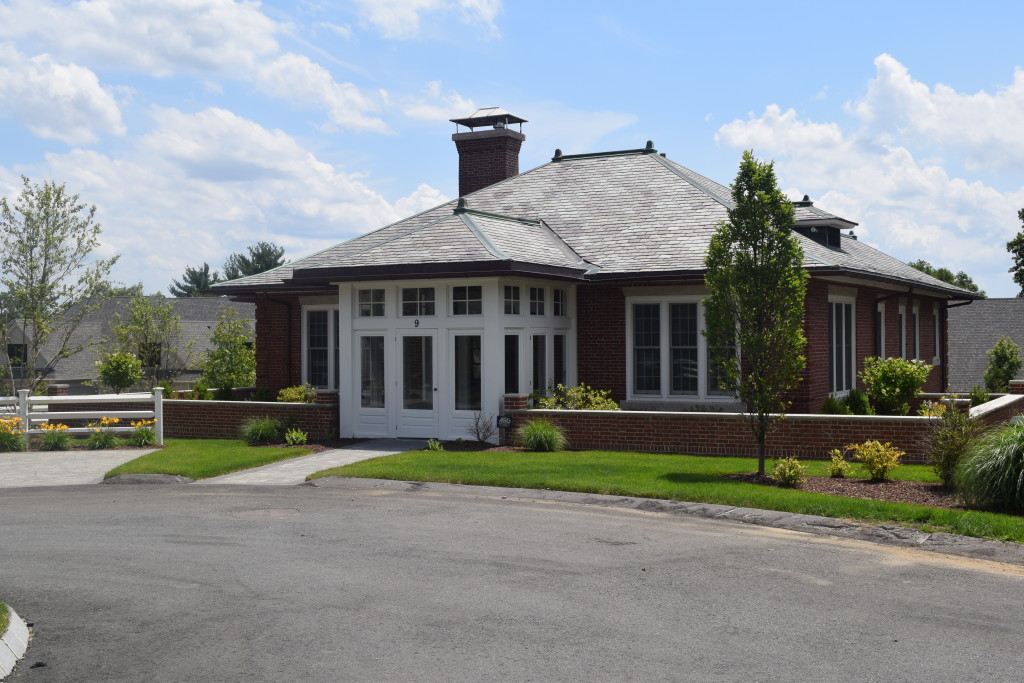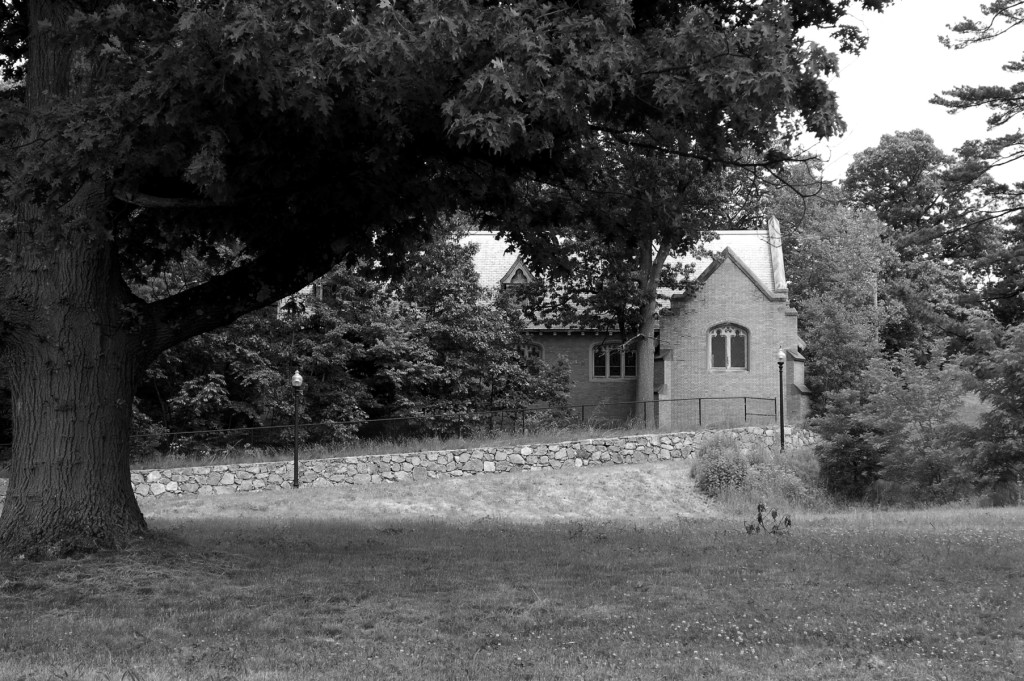
By Sue Bass
Piece by piece, the remaining open land in Belmont is being protected—or developed. The Belmont Uplands were bulldozed. The town’s last farm has been saved, protected by Lydia Ogilby and her family with an agricultural restriction. A dozen houses are filling what used to be two six-acre estates off Concord Avenue on Belmont Hill. But nearby open space is covered by conservation restrictions, thanks to descendants of the Claflin-Atkins family that once farmed the land, particularly the late Anne Allen.
The fate of two major open areas remains undetermined. Officers of the Belmont Country Club insist that no sale or development is contemplated for their 133-acre property. And McLean Hospital owns 25 fallow acres whose options-to-buy have expired. Much of the McLean land rezoned in 1999 and approved for redevelopment is already filled with townhouses, called The Woodlands at Belmont Hill. The two remaining parcels of open land, out of 238 acres total, consist of 13 acres rezoned for a large senior complex and 12 acres for a research and development building. Now that options to buy that land from McLean have expired, what is in their future?

View of the Upham Memorial Building , also known as Upham House, from nearby development at McLean. The Upham House has been redeveloped as condos./ Susan Jones
So far, nothing. Jeffrey Wheeler, the town’s senior planner, says people do ask him casually about them, but the most serious inquiry he knows is a proposal to expand the Woodlands, which would require a zoning change. Michele Gougeon, executive vice president and chief operating officer of McLean, noted that the two parcels are zoned for very specific activities. “Our hope is that in the longer run we’ll be able to do what we originally wanted,” Gougeon said.
Here’s how this situation came to be. About 20 years ago, McLean was short of money and looked around for ways to make up a shortfall then pegged at $46 million.
Psychiatric care had changed a lot since McLean opened in 1818. Country air, healthful food, quiet pastimes, and walks were an important part of that care for more than 130 years. McLean even moved from Somerville to Belmont in 1895 because the “tranquil environment, deemed so important in the treatment of mentally ill patients,” had been disrupted by development around the old site, according to the hospital’s website.
By the middle of the 20th century, however, drugs and electric shock treatment began to revolutionize psychiatric treatment. Years of hospitalization in tranquil settings, at least for the rich, gave way to much shorter inpatient stays. McLean’s cash crunch was amplified by insurance rules limiting payment for inpatient stays. Over several decades, Massachusetts closed 14 state hospitals that treated patients with mental illness, including the Metropolitan State Hospital on the Waltham/Lexington border, which closed in 1992.
By 1995, McLean proposed to do what it had done several times before—sell off land. McLean had raised cash in 1968 by selling its former farm to the town for open space. Aided by federal and state funds, that became the Rock Meadow conservation land. This time, McLean wanted the land rezoned for sale to developers. The Belmont Selectmen appointed a committee to study the issue. Because Belmont itself had (and has) its own cash crunch, part of the McLean Hospital Land Use Task Force committee’s purpose was to increase town tax revenue.
The rezoning that resulted shrunk the McLean Hospital campus to 55 acres. It protected the most striking feature of the historic landscape, the Upham Bowl, and some of the historic buildings. It reserved 14 acres for a second town cemetery, only a part of which is now in use. It allocated 26 acres for high-end residential development, now the Woodlands townhouses, buffered from Mill Street by another 11 acres of private open space. It gave the town 1.34 acres for affordable housing, on which the town’s Housing Trust built 40 units in 2009, among the first affordable units built in Belmont in two decades. The rezoning also provided 105 acres of publicly accessible open space, though divided by a substantial road, Olmsted Drive, which cuts a wide swath through the woods overlooking the south end of Pleasant Street.

The Belmont Historical Society awarded a 2015 David R. Johnson Preservation Award to the Northland Corporation for its adaptive re-use of three buildings on the McLean campus: the South Cottage (above), the McLean Hospital Stables, and Upham House. / Belmont Historical Society
Two more developments allowed by the rezoning were particularly controversial. One is a senior housing complex of 480 units, with parking and a retail area of up to 60,000 square feet, or two-thirds the size of Belmont Center.
The other is a research and development/office building of 150,000 square feet, plus a parking garage. They would generate many thousands of vehicle trips a day travelling down Olmsted Drive onto Pleasant Street, and both developments would be visible over the woods from Waverley Square and Clark Hill. On the other hand, they were expected to yield a lot of revenue for both the town and McLean, in addition to $800,000 in one-time benefits, including traffic signals at the intersection of Pleasant Street and Trapelo Road.
The controversy over this deal led to a town-wide referendum in July 1999 that attempted to repeal the zoning, and years of litigation. It was part of the impetus for founding the Belmont Citizens Forum in the fall of 1999: to improve town planning processes, protect open space, and limit traffic.
Neither development has been built. McLean thought it had a buyer for the land for the senior complex when American Retirement Corp., later taken over by Brookdale Senior Living, proposed to build what was to be called Freedom Commons. The developers went through an extensive site plan review process and then litigation over their affordable housing plans and sewer connection permit.
Then Brookdale began marketing. An attractive card showing a wooded path on the public open space (mislabeled the “beautiful grounds of Freedom Commons”) invited residents to learn more about the proposed community. They collected many $1,000 deposits—but in 2009 returned the money. The corporation had been hurt by “unfavorable conditions in the housing, credit and financial markets and by deteriorating conditions in the overall economy,” according to their report to the US Securities and Exchange Commission.
The expected buyer of the R&D parcel was less public. Belmont ValueRealty Partners LLC of Cambridge was formed in 2000 as an investment arm of Belmont businessman Joseph J. O’Donnell. The project received site plan approval in December 2001, but no development has appeared. O’Donnell has not replied to phone messages, but an agent of his confirmed that all options had lapsed.
Estimates Hard to Verify
In 1999, a consultant for the town estimated that the development of the McLean property would yield Belmont an additional $3 million a year in gross revenue—and, significantly, $1.2 million in net revenue after expenses. Most of the net revenue was to come from the senior complex; it was thought that for the townhouses, expenses for public school children would offset most of their additional revenue.
Like many projections, those were optimistic. Prices also changed substantially in 16 years. The town houses now sell for about twice the $625,000 estimated in 1999, and per-pupil school costs are about three times the estimate of $3,900. Without the senior complex and the R&D development, the gross revenue to the town from the McLean campus in 2015 was just $1.66 million, including $28,000 as a payment in lieu of taxes for the affordable housing at Waverley Woods.
It is difficult to assess the town’s cost of providing services to the property, including to McLean Hospital itself. Town Administrator David Kale declined even to try. Many speculated in 1999 that providing police and fire services to McLean then cost the town about the same as the $512,000 a year that the hospital paid in taxes. Now the hospital pays no taxes, and police and fire costs are presumably higher. The School Department has no easy way to determine public school enrollment from the Woodlands and Waverley Woods. So far, the hoped-for net revenue may be slim or nonexistent.
McLean’s finances are reported publicly only as part of those of its parent, Partners Health Care System Inc. However, the sale of the Woodlands property in 2005 is public; the hospital received $14.7 million, more than $30 million short of what McLean hoped for in the 1990s. Much else has changed too. Gougeon, the executive vice president, declined to say that the hospital is out of the crisis that drove its rezoning. “In health care, you live month to month,” she said. “Psychiatric services are not highly remunerated. I wouldn’t say that there’s ever a sense that the bad times are over.”
Time to Revisit McLean Zoning?
What remains for the town is whether to revisit the zoning of the remaining 25 McLean acres earmarked for development. The same questions arise as in the 1990s: How likely is development to yield net revenue? Is that worth the increased traffic? Will any surplus even repay the cost of required traffic management devices? And what about the commercial property across south Pleasant Street? Some property owners considered expanding in the past. Can Pleasant Street stand to be squeezed from both sides?
Sami Baghdady, chair of the Belmont Board of Selectmen and a former member of the Belmont Planning Board, said it is time for the community to discuss rezoning the McLean hill, in the context of the commercial property across Pleasant Street. “There seem to be no apparent takers under the current zoning,” he said. None of the Pleasant Street property owners are now pressing the town to rezone their land, he said, but the Planning Board needs to look ahead.
Sue Bass was a cofounder of the Belmont Citizens Forum.



Sorry, the comment form is closed at this time.